
In the past, fluid level sensors provided a simple on/off signal, but now sensors are being called upon to supply a great deal more information. The trend towards increased control circuits being employed in both residential and industrial device application monitoring is driving the need for more complex and smarter liquid level sensors that are capable of more than just an open or closed signal.
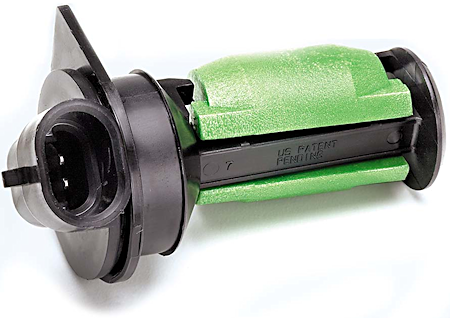
Residential and industrial apps are requiring more sophisticated fluid-level sensors.
In some instances additional information can be signaled with simple magnetic reed switches by adding many reed switches to a PCB to give multiple liquid level point measurements. In this application resistors can be placed in circuit to provide discreet voltage outputs that will indicate one of many possible level points along the travel path of a magnetic float.
If digital or custom voltage signals are required, this is accomplished through the use of either onboard or remote signal electronics. The environment the sensor has to work in can also determine whether a simpler mechanical float level sensor will work or if a more sophisticated conductivity sensor is appropriate.
A mechanical float level sensor can suffer failure due to contaminants restricting the movement of the magnet containing float. A conductivity sensor must discern between being submerged in fluid or just having a viscous fluid clinging to its probes and a standard conductivity sensor that is always submerged in a fluid is highly susceptible to electrolysis.
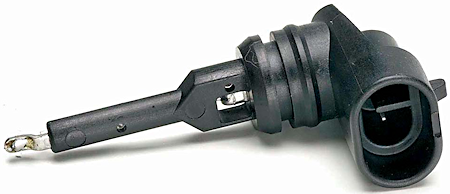
An auto fluid sensor
Why Fluid Level, Pressure, And Flow Sensors?
Easily customizable and simple to install, reed-switch based level sensors are low power devices that don't require complex electronics, making them very appealing for most applications. For example, dishwashing machines frequently used these sensors to signal an overfill condition to prevent excessive water usage and flooding outside the unit. Another example is a sensor to signal a dangerously low brake fluid reservoir level in automotive applications.
The dishwasher fluid level sensor used a micro switch that had been replaced with the technology of the R12580 and R12581 sensors. This product utilizes reed switches and a thermistor mounted on a PCB and packaged all in one piece with two magnet floats. One float and switch provide overflow protection that shuts down the dishwasher, and the other float moves between two reed switches to give multiple level readings.
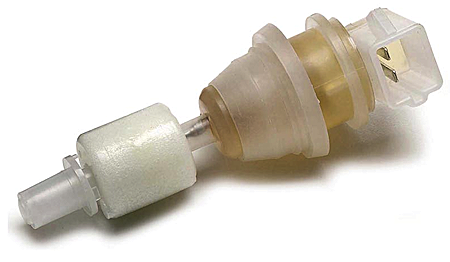
Another automatic level sensor
Over the past few years, customers have begun expecting more from level sensors than just an on/off signal to provide more user information. In addition to danger level conditions, they want warning conditions and an easy to use system.
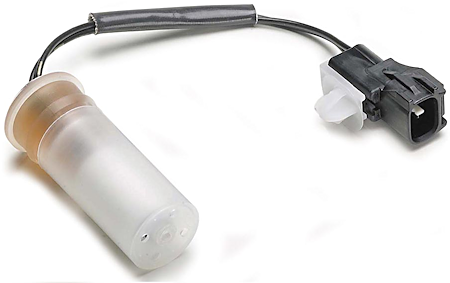
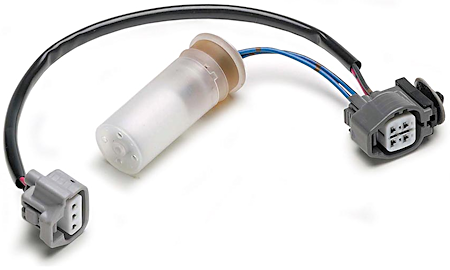
Fluid level sensors provide monitoring of more than one parameter
An example is the bulk detergent level sensing feature found in modern laundry equipment. While not required for a dishwasher to function, the sensor prevents the need for the customer from having to check detergent level every time they run the appliance, providing smart feedback and delivering on the ease of use/convenience factors customers appreciate.
Environmental Trends Affecting Fluid Level Sensing
Environmental initiatives are another big driver of new sensor technology and applications, particularly in response to the trend toward closer energy monitoring, for both individual appliances and household and industrial water tanks. There has been a movement towards devices talking wirelessly with each other, and we will need a smart sensor between the machine-to-machine (M2M) interactions, and the medium which they communicate.
One of several companies, Standex-Meder offers innovative, high-quality reliable components that fit the bill for such applications. Picture yourself while on vacation receiving a text message from the air conditioner drain line with an alert that the sump pump has stopped working. This type of alert would definitely require a level sensor with onboard electronics.
Clean water and water treatment is another environmental trend with huge implications for level sensing. In fact, water treatment in developing nations is perhaps the largest market for level sensors, including applications designed for industrial effluent, sewer water, gray water, and clean water.
There is a significant push to be more efficient with the use of water and sensing applications are being used to ensure that fluid reservoirs are not overfilled, causing waste. Standex-Meder offers devices meeting National Science Foundation (NSF) regulations and stainless sensor requirements for various applications as they relate to drinking water, food service, and related specifications.
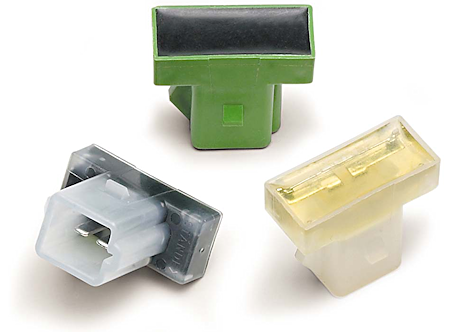
Sensors are also being used to provide more accurate feedback on how much water can be reused. This is evident in newer appliance designs, in which engineers are trying to maintain a certain level of water in the wash cycle by using fluid sensors to measure how warm or dirty water is. This lets the sensor determine if water can be reused for rinsing or if fresh water has to be added to the wash cycle and heated.
Conclusion
Simply put, level sensors and related products can intelligently provide the functionality necessary to help products be smarter, more efficient, and productive to where the results can be less energy usage, improved resource management, lower costs, and increased performance.
About the Authors
Alex Vinnage – Engineering Manager for Sensors Products at Standex-Meder Electronics
Dave Jones – Engineering Design Manager at Standex-Meder Electronics
Related Stories
Level Sensors Offer Optical Reliability At Float Switch Prices
Smart sensors for better and safer living
INFICON Shows Latest Leak Detection Technology
Level Sensors Technology Market 2020 Forecasts in New Research Report